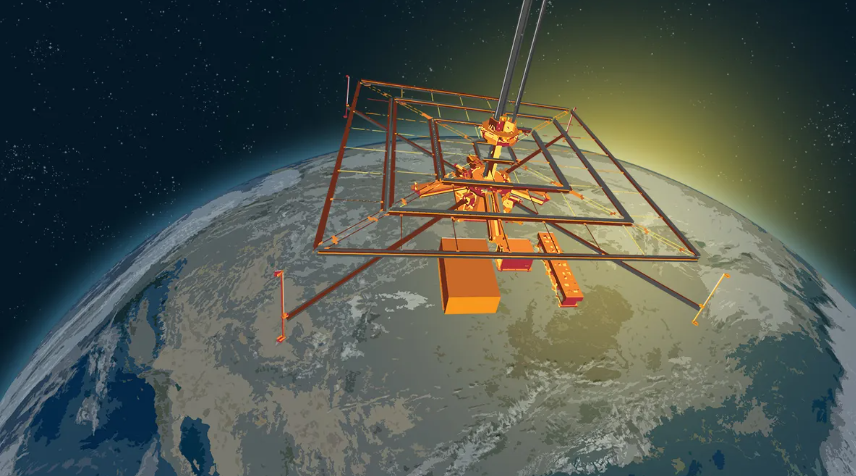The California Institute of Technology (CalTech) launched a small craft into orbit on January 3 to test the efficacy of space-based solar power. The prototype project, Space Solar Power Demonstrator (SSPD), has had successful land-based demonstrations, and it will now run tests to show its ability to beam usable energy from orbit.
Space-based solar power provides a way to tap into the practically unlimited supply of solar energy in outer space, unaffected by the cycles of day and night or by cloud cover and shading from objects.
A craft called the Momentus Vigoride carried the SSPD into orbit, propelled by a SpaceX rocket. The trip is expected to take about ten minutes to reach orbit, and testing will take place over the following weeks.
The 50-kilogram SSPD will deploy a constellation of modular spacecraft equipped with PV to collect sunlight, convert it to electricity, and then wirelessly transmit the electricity over long distances wherever it is needed. Caltech said the technology could be particularly useful to remote areas that do not have supportive transmission infrastructure.
The SSPD is made of three major components, each of which will be tested on the mission:
- DOLCE (Deployable on-Orbit UltraLight Composite Experiment): A structure measuring 6 feet by 6 feet that demonstrates the architecture, packaging scheme and deployment mechanisms of the modular spacecraft that would eventually make up a kilometer-scale constellation forming a power station;
- ALBA: A collection of 32 different types of photovoltaic (PV) cells, to enable an assessment of the types of cells that are the most effective in the punishing environment of space;
- MAPLE (Microwave Array for Power-transfer Low-orbit Experiment): An array of flexible lightweight microwave power transmitters with precise timing control focusing the power selectively on two different receivers to demonstrate wireless power transmission at distance in space.
The research team expects the pilot testing mission to take a few months to operate the PV arrays and collect data on their performance.
“It works here on Earth, and has passed the rigorous steps required of anything launched into space. There are still many risks, but having gone through the whole process has taught us valuable lessons. We believe the space experiments will provide us with plenty of additional useful information that will guide the project as we continue to move forward,” said Ali Hajimiri, professor at Caltech and co-director of the project.
Caltech’s space solar program began in 2011 when philanthropist Donald Bren became interested in the technology. Bren has donated an excess of $100 million in support of the project and associated endowed professorships through his foundation.
“For many years, I’ve dreamed about how space-based solar power could solve some of humanity’s most urgent challenges,” Bren says. “Today, I’m thrilled to be supporting Caltech’s brilliant scientists as they race to make that dream a reality.”
This content is protected by copyright and may not be reused. If you want to cooperate with us and would like to reuse some of our content, please contact: editors@pv-magazine.com.









By submitting this form you agree to pv magazine using your data for the purposes of publishing your comment.
Your personal data will only be disclosed or otherwise transmitted to third parties for the purposes of spam filtering or if this is necessary for technical maintenance of the website. Any other transfer to third parties will not take place unless this is justified on the basis of applicable data protection regulations or if pv magazine is legally obliged to do so.
You may revoke this consent at any time with effect for the future, in which case your personal data will be deleted immediately. Otherwise, your data will be deleted if pv magazine has processed your request or the purpose of data storage is fulfilled.
Further information on data privacy can be found in our Data Protection Policy.